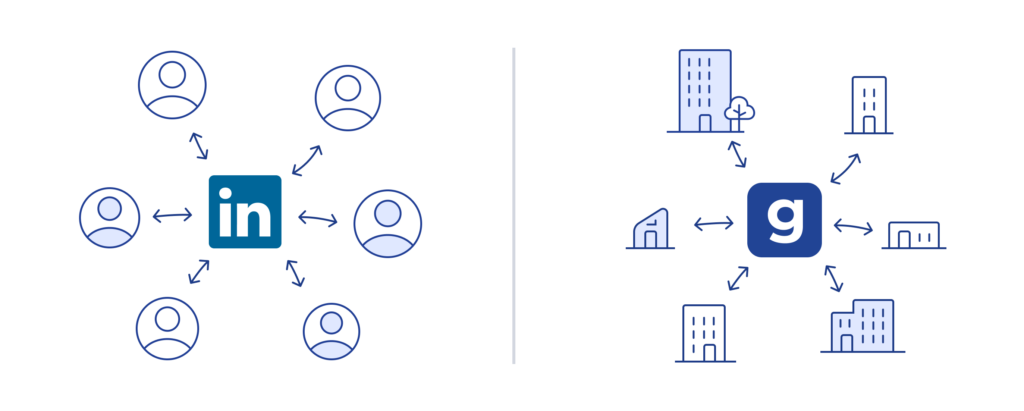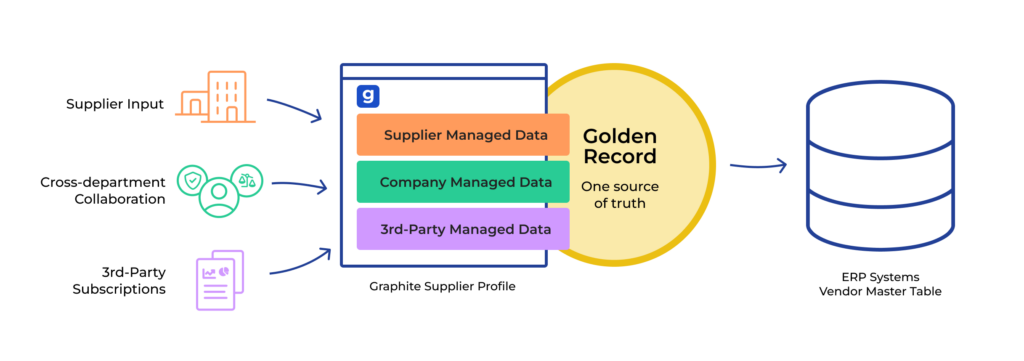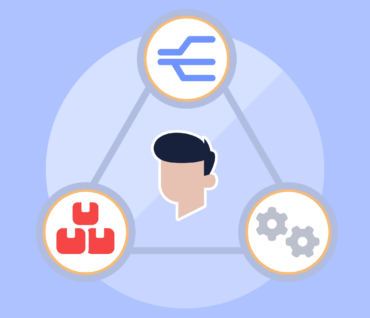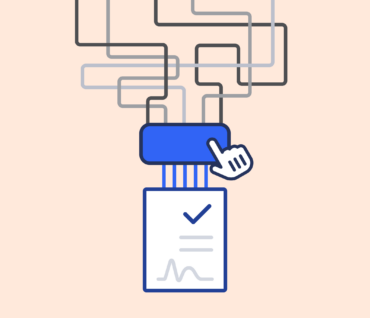How Graphite Creates Golden Supplier Records
The best way to organize your supplier information is with accurate, live supplier records.
What Is Graphite?
Platforms like LinkedIn have become an integral part of the modern-day work environment, where professionals can expand their networks and easily share their experiences with potential employers and peers. With a user-friendly search interface and vast user base, LinkedIn offers unparalleled opportunities to connect with others in your industry or company. Like LinkedIn, Graphite also helps businesses to connect in a network architecture.

In the realm of data management, Graphite stands out as a powerful tool for managing commercial data. At the heart of Graphite is the golden vendor record, which plays a critical role in maintaining the accuracy and completeness of commercial data within an Enterprise Resource Planning (ERP) system.
Yet, Graphite’s scope extends far beyond just managing commercial data. It’s a comprehensive suite packed with features and services that streamline supplier data management, optimize workflows, and enhance operational efficiency. From robust data governance to ensuring data quality, Graphite equips businesses with the tools they need to make informed, data-driven decisions confidently.
Graphite revolutionizes procurement processes by giving suppliers and vendors the ability to manage their own critical data, automatically validating supplier data, and integrating seamlessly with critical business systems like ERP and Procure-to-Pay (P2P). This modern approach amplifies the efficiency of procurement teams, aligning them with the demands of the modern business environment.
How Does Graphite Create a Golden Record?
Managing supplier records information can be a complex and time-consuming process. However, the Graphite network simplifies and streamlines this process by bringing together supplier-managed data, buyer-managed data, and third-party data in a central location that offers a single source of truth–or the golden record.

Supplier-Managed Data
Graphite’s supplier portal is a gateway for suppliers to join its expansive network. When invited to join the Graphite network, a supplier first goes into the supplier portal to create a complete profile with all relevant company data and required documents. This self-serve portal allows suppliers to securely input and update critical information ranging from banking details and tax IDs to diversity and sustainability status.
Each supplier profile undergoes rigorous validation in Graphite. Our team of specialists diligently verifies the supplied information to ensure accuracy and reliability. Once a profile passes this validation, it seamlessly syncs with your existing Enterprise Resource Planning (ERP) and Procure-to-Pay (P2P) tools.
Graphite stands as a neutral ‘network of networks’ service that seamlessly connects with various systems such as Ariba, Coupa, Oracle, SAP, Netsuite, and Workday, to centralize and surface vital business data. Graphite doesn’t replace your current systems, but, instead, complements them, enhancing data management and streamlining supplier processes within your business ecosystem.
Buyer-Managed Data
Buyer organizations are often inundated with critical data that extends beyond what suppliers provide. This wealth of data includes various elements like internal payment details, payments, transactions, comprehensive risk assessments, and inputs from procurement teams. Graphite acknowledges this complexity and offers a centralized solution for storing and associating this multitude of data and documents with specific supplier profiles.
Graphite’s robust platform simplifies the process of onboarding new suppliers. Buyers are able to efficiently verify if all necessary information is at hand, streamlining the purchase decision-making process. Graphite proactively assists in risk evaluation by flagging potential issues or highlighting necessary approvals.
By leveraging this information, buyers using Graphite can make sure that each step in the new supplier relationship is backed by reliable data insights.
Third-Party Data
Integration of third-party data sources is a crucial component to building a complete Graphite profile, and forms a 360-degree view of critical customer data. By funneling third-party data into Graphite, buyers are equipped with a comprehensive view of supplier risk in one consolidated tool.
The Graphite platform transcends basic data management by enabling buyers to visualize and automatically assess a supplier’s overall risk profile directly within the system. This can include data on additional information like financial stability, regulatory compliance, environmental sustainability, and related topics.

By leveraging third-party data, buyers can gain a more holistic understanding of their suppliers, enabling them to make better-informed procurement decisions. This leads to increased efficiency and cost savings, as well as reduced risk and improved supplier performance. Overall, the integration of third-party data sources into Graphite can significantly enhance the effectiveness of procurement processes and enable organizations to achieve their strategic goals.
How Does Graphite Work with an ERP?
Despite the number and complexity of your ERP and P2P configurations, Graphite can serve as the bridge that allows you to standardize and deduplicate your supplier data. If you’re dealing with data issues in your ERP and wondering whether you should wait until your issues are resolved or until you’ve completed a migration to a new ERP system, the answer is no. Graphite can start addressing your data problems immediately, even if your ERP issues are not completely resolved. Golden supplier records are within reach with Graphite Connect.
Ready for Golden Supplier Data?
Say goodbye to the hassle and stress of managing supplier contact information. Request a demo today and see how easy it is to streamline your supplier information management and track supplier performance.
Request a Demo


